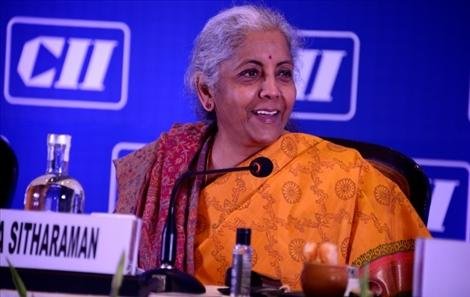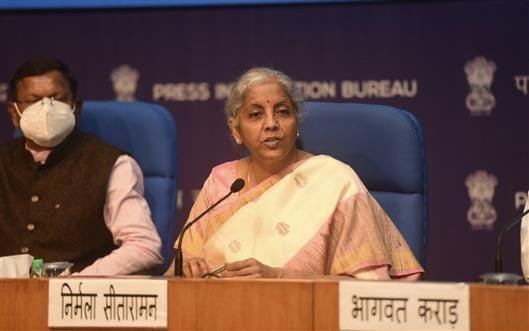By Dr Amitendu Palit, a Senior Research Fellow and Research Lead at the Institute of South Asian Studies (ISAS).
Very few Indian budgets in recent years have been presented in a more favourable backdrop than the budget presented by Finance Minister Arun Jaitley on 28 February 2015. The Economic Survey, presented a day before the budget forecasted an economic growth of more than 8 per cent in the next financial year. It also emphasised that the country was set for ‘big bang’ reforms.
The Finance Minister would have been aware of the tremendous expectations from the Prime Minister Narendra Modi government’s first full budget.
Inflation was under control largely due to the unprecedented fall in global oil and commodity prices. The stock market was robust with the foreign institutional investors (FIIs) having made a forceful comeback. The external sector and balance of payments conditions had improved remarkably. Better fundamentals were also showing signs of committing a cautious Reserve Bank of India into an easier monetary policy.
The budgeted fiscal deficit target of 4.1 per cent of the Gross Domestic Product was looking difficult to be met, given the overestimation of revenues. Matters could have worsened following the 14th Finance Commission’s decision to substantially increase the share of states from the tax proceeds collected by the Centre. But the new GDP figures released by the Central Statistical Organisation (CSO) a few weeks before the budget came to the Finance Minister’s rescue.
Indeed, had the new GDP figures not given the cushion of a higher base, the Mr Jaitley would have found it almost impossible to meet the budgeted fiscal deficit. Buoyed by a projected GDP growth of 7.4 per cent for the current fiscal (2014-15), also up two percentage points than what most were expecting, the GDP growth estimation for the next fiscal could also be more optimistic. The baseline GDP growth has been around 8 per cent or more, which was impossible to visualise a few weeks ago.
The budget has something for practically everybody. As a starter, it has pleased analysts and experts who were demanding higher public investment in infrastructure for accelerating and multiplying the growth momentum in the economy. Following the pattern of capital finance outlined in the Rail Budget, public outlays have been sharply increased on roads and railways. Tax-free infrastructure bonds for rail, road and irrigation projects are expected to channelize considerable household and corporate savings into infrastructure financing. These would be matched by the funds allocated to the newly-created National Investment and Infrastructure Fund (NIIF).
The world was expecting the Finance Minister to announce a date for rolling out the Goods and Services Tax (GST). As of now, it is April 2016. While the Finance Minister has not specified whether the date is cast in stone, ample references to the GST as a ‘game changer’ in the budget raise hopes of it being more sacrosanct than other tentative datelines announced in previous budgets.
The more significant innovative structural measures include merging the Forward Markets Commission – the regulator for commodity futures – with the Securities and Exchange Board of India (SEBI); proposing a law for streamlining the process of public procurement; introducing sovereign gold bonds and facilities for gold depositors to earn interests in metal accounts; creating a Public Debt Management Agency for managing both external and internal borrowings; and encouraging public ports to corporatize under the Companies Act for attracting greater private investments. In what could be a significant structural measure for channelizing Indian investments into manufacturing activities in Southeast Asia, a project development company has been proposed for facilitating investments in Cambodia, Lao, Myanmar and Vietnam.
Foreign investors would also be happy to note the decision to do away with the distinctions in various types of foreign investments, particularly portfolio and direct investment, and to replace them with composite sectoral caps. In addition, a greater relief for them is the decision to defer the General Anti-Avoidance Rules (GAAR) on corporate taxation for at least two years and the Finance Minister’s commitment to apply these rules, whenever they come in, prospectively, and not with retrospective effect as the Government had indicated of the doing.
The new budget emphasises review of the Public Private Partnership (PPP) mode of infrastructure development and admits the importance of government bearing greater risks in these ventures. Investors would have been looking for greater clarity in this regard, particularly in terms of the risk sharing structures that the government is contemplating. However, the Budget has stopped short of being specific.
Industry and business could hardly complain over what the budget has delivered for them. The phased lowering of corporate income tax from 30 per cent to 25 per cent was a bit unexpected at a time when the Centre would have to give up more revenue following the recommendations of the Finance Commission. Prospective investors for “Make in India” would also be happy over the various fiscal incentives offered for the scheme including the tax “pass through”, higher investment and depreciation allowances and reduction of customs duty on various essential raw materials, intermediates and components.
The budget has fussed over the Government’s intention to introduce a law for curbing growth of black money. Some of the features of this proposed law point to the strict penalties, especially for non-disclosure.
The budget has not cut subsidies though the current economic backdrop would have been ideal for doing so. It would have also been rational since the government needs to create more fiscal room. It is also perplexing that the budget makes no mention of disinvesting government equity in public enterprises – an effort that was conspicuous in the earlier budget. The long-term reform agenda is virtually left untouched, given no mention of labour or insurance reforms.
ISAS is a think tank at the National University of Singapore.










